Imagine a low-maintenance, evergreen tree that graces your landscape with vibrant, fragrant flowers each spring. Texas Mountain Laurel trees are the perfect addition to any garden, offering year-round color, captivating blooms, and minimal care requirements.
Discover the beauty and simplicity of this native tree and learn how to plant, care for, and propagate your own Texas Mountain Laurel.
Short Summary
Texas Mountain Laurel Trees are native to central Texas and offer many benefits, including improved air quality and fragrant purple-blue flowers.
When planting a Texas Mountain Laurel tree, consider the tree’s native habitat for optimal growth conditions. Adequate water, pruning & pest/disease management is necessary for its long-term health & beauty.
Adding this evergreen shrub to xeriscape or native plant gardens can provide an attractive addition while promoting biodiversity & ecological balance in the landscape.
Characteristics of Texas Mountain Laurel Trees
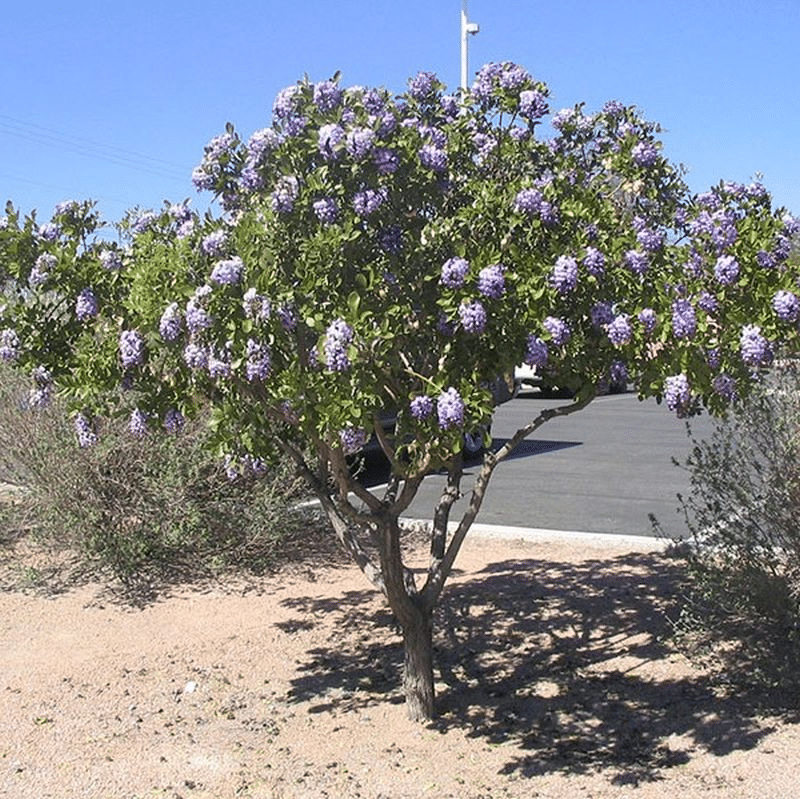
Texas Mountain Laurel Trees (Sophora secundiflora) are slow-growing, evergreen shrubs with a unique combination of characteristics that make them an attractive and low-maintenance addition to any landscape. Native to central Texas, New Mexico, and northern Mexico, these trees are drought-tolerant and thrive in a variety of soils, from rocky limestone to clay and sandy soils.
Their dark green foliage is a deep, glossy green and their fragrant, purple-blue flowers bloom on the flowering shrub, contrasting beautifully with the dark brown branches.
Evergreen Shrub
One of the most appealing traits of Texas Mountain Laurel is its evergreen nature. The dark green, glossy leaves provide year-round color and interest in the garden.
As an evergreen shrub, it offers a number of benefits, such as enhancing air quality, offering shade, and serving as a natural shelter and windbreak. In addition, evergreen shrubs typically require less maintenance than their deciduous counterparts.
Able to grow as a small tree or large shrub, Texas Mountain Laurel can be used in various ways in the landscape. Planting several in a line creates a tall, living screen for privacy, or use a single tree as a striking focal point in the garden. The versatility and year-round beauty of this tree make it a popular choice for many gardeners.

Fragrant Flowers
The fragrant, purple flowers of the Texas Mountain Laurel, known for their early spring blooms, attract pollinators such as bees and butterflies. The showy flowers grow in drooping clusters, with a unique blueish lavender hue and a sweet aroma reminiscent of grape Kool-Aid. Blooming in early spring, the flowers provide a welcome burst of color as the season begins.
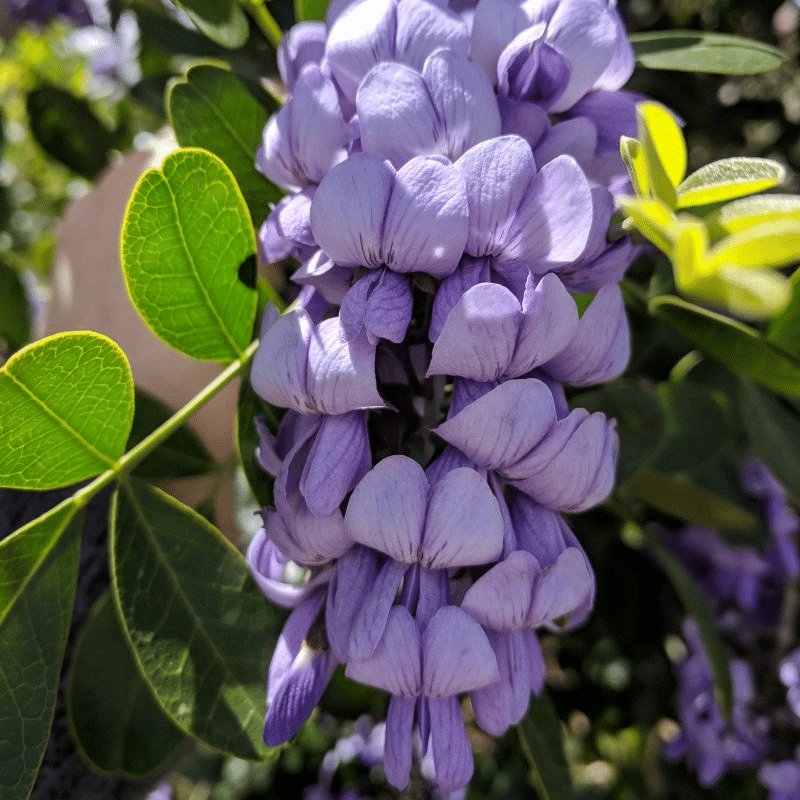
Aside from adding beauty to your landscape, the fragrant flowers of the Texas Mountain Laurel also support local pollinators. Bees and butterflies are attracted to the blooms, helping to maintain a healthy ecosystem in your garden. By incorporating Texas Mountain Laurel into your landscape, you’re not only creating visual appeal, but also promoting biodiversity and ecological balance.
Seed Pods
While the fragrant flowers steal the show, Texas Mountain Laurel also produces seed pods containing toxic red seeds. These semi-woody pods contain bright red seeds that are highly poisonous if ingested, making them a potential hazard for children and pets. Therefore, it’s crucial to handle the seed pods with care and keep them away from curious hands and paws.
Despite their toxicity, the seed pods add an intriguing element to the Texas Mountain Laurel tree. With proper care and caution, you can enjoy the unique beauty of this tree while ensuring the safety of those around you. By being mindful of the potential risks, you can confidently incorporate Texas Mountain Laurel into your landscape for all to admire.
Planting Mountain Laurel Trees
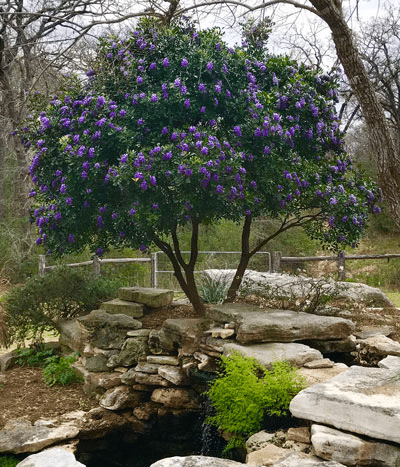
Planting a Texas Mountain Laurel tree requires careful site selection, soil preparation, and proper planting techniques to ensure its success. With the right conditions and care, your tree will reward you with stunning blossoms and year-round beauty.
Site Selection
Choosing the perfect site for your Texas Mountain Laurel is crucial for its growth and overall health. These trees thrive in full sun locations, where they receive ample sunlight throughout the day. However, they can also tolerate partial shade, especially if they receive afternoon sun.
When selecting a site for your Texas Mountain Laurel, consider the tree’s native habitat. Naturally found in central, southern, and western Texas, New Mexico, and northern Mexico, these trees are accustomed to dry, rocky soils and hot, sunny conditions. By mimicking these conditions in your landscape, you can create an optimal environment for your tree to flourish.
Soil Preparation
Texas Mountain Laurel trees prefer well-drained soil, making it crucial to ensure proper drainage when preparing your planting site. While these trees can grow in a variety of soil types, including clay, loam, and sand, they perform best in well-drained soils. Additionally, Texas Mountain Laurel prefers slightly alkaline soil, so amending with calcium may be necessary if your soil is acidic.
When preparing the soil for Texas Mountain Laurel, follow these guidelines:
Avoid over-amending or creating a soil mixture that is too rich.
Texas Mountain Laurel thrives in infertile, rocky soils.
Overly rich soil can lead to weak, spindly growth.
Maintain a balance between well-draining and slightly alkaline soil conditions. By following these steps, your tree will establish a strong root system and thrive for years to come.
Planting Process
With the proper site and soil conditions in place, it’s time to plant your Texas Mountain Laurel tree. Here’s how:
Begin by digging a hole slightly larger than the root ball, allowing for ample space for the roots to grow and establish.
Carefully place the root ball into the hole, ensuring that it sits level with the surrounding soil.
Backfill the hole with soil and gently tamp it down to eliminate any air pockets.
Once your tree is planted, provide it with deep, regular irrigations to encourage strong root growth. Newly planted Texas Mountain Laurel should be watered every 3-4 days for the initial few weeks, and then every 4-7 days for the first year.
As your tree becomes established, it will require less frequent watering, thanks to its drought-tolerant nature.
Caring for Your Texas Mountain Laurel Tree
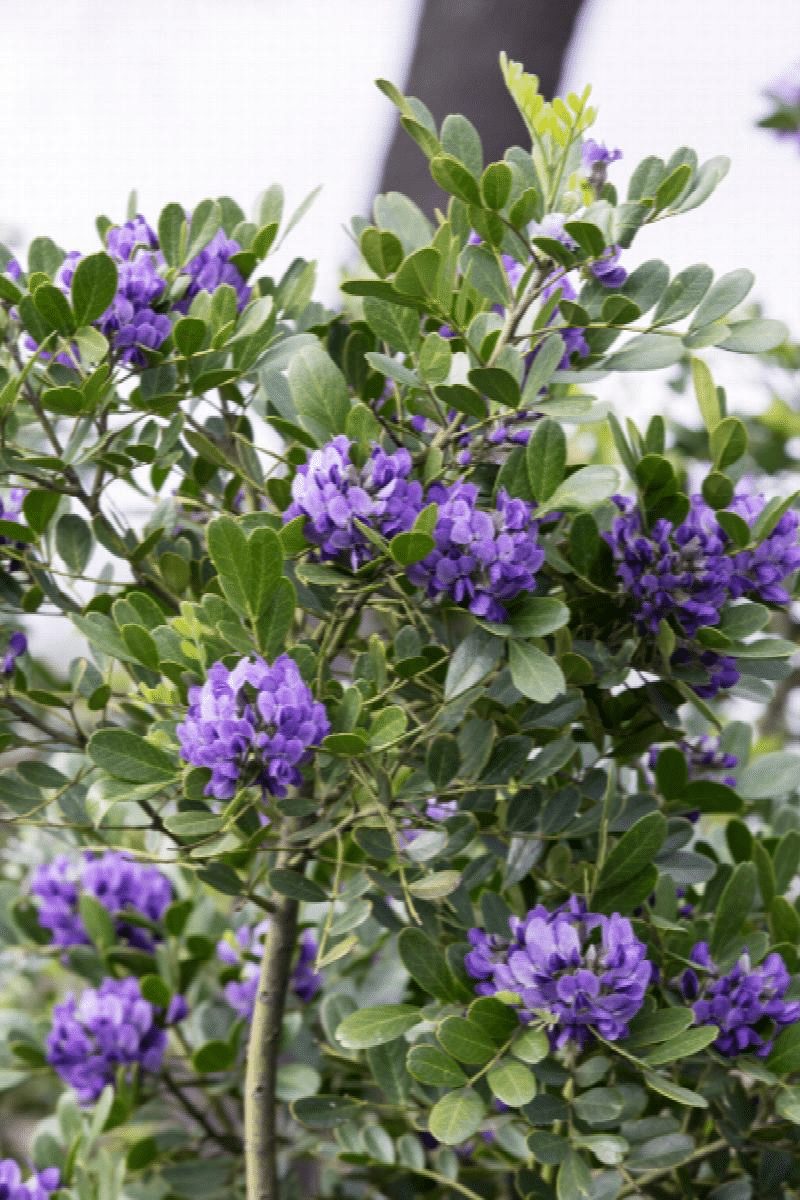
Proper care for your Texas Mountain Laurel tree includes watering, pruning, and pest and disease management. By following these guidelines, you can ensure the health and beauty of your tree for years to come.
Watering
Though Texas Mountain Laurel trees are drought-tolerant, they still require some water to thrive, especially when first planted. During the first year, water your tree every 4-7 days to help it establish a strong root system. After the first year, you can reduce watering frequency to every 10-14 days, as the tree’s tolerance for drought will increase.
It’s important not to overwater your Texas Mountain Laurel, as excess water can weaken the branches and make the tree more susceptible to pests and diseases. By providing deep, infrequent watering, you can ensure your tree receives the moisture it needs without causing harm.
Pruning

Pruning your Texas Mountain Laurel tree is essential for maintaining its health and appearance. When the tree is young, prune it to promote strong branches and a desired shape, removing no more than one-third of the plant at a time.
As the tree continues to grow, pruning is necessary. It should be done to remove broken or damaged branches, or to maintain the tree’s desired shape and size.
The best time to prune your Texas Mountain Laurel is in the summer, after it has finished flowering. This allows you to remove any dead or damaged wood, as well as shape the tree without risking damage to delicate flower buds. By pruning your tree carefully and at the right time, you can ensure its beauty and health for years to come.
Pest and Disease Management
Texas Mountain Laurel trees are generally resistant to pests and diseases, but it’s still important to monitor for any signs of infestation or illness.
One common pest is the genista caterpillar, a yellow-bodied moth larva that can defoliate a tree if left unchecked. If you notice genista caterpillars on your tree, treat with Bacillus thuringiensis, a natural and effective method of control.
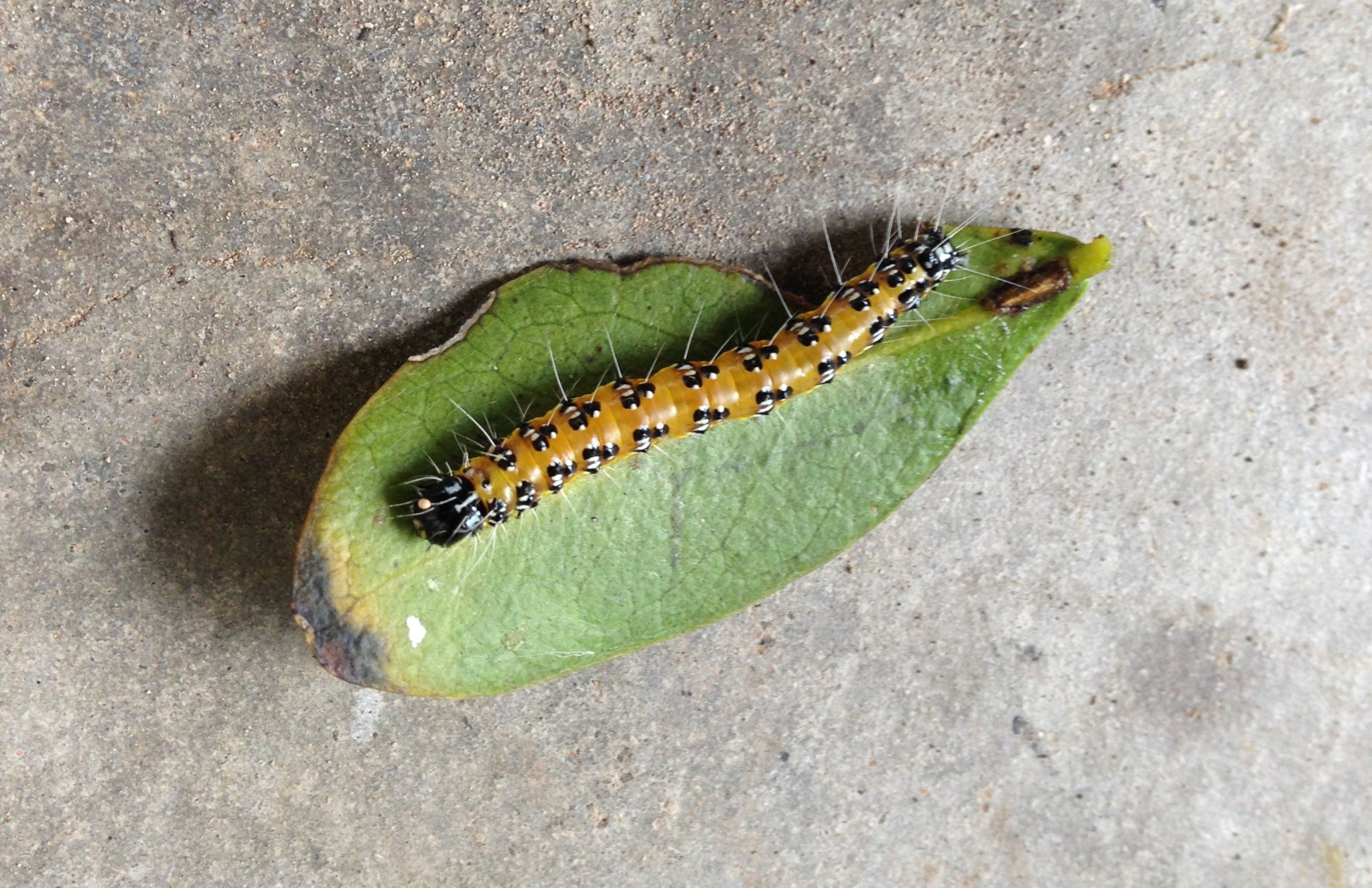
Aside from genista caterpillars, watch for other pests and diseases, such as Red Mountain Laurel Mirid, weevils, and fungal leaf spots and blights. By keeping an eye on your tree’s health and addressing any issues promptly, you can ensure its longevity and beauty.
Propagating a Mountain Laurel Tree
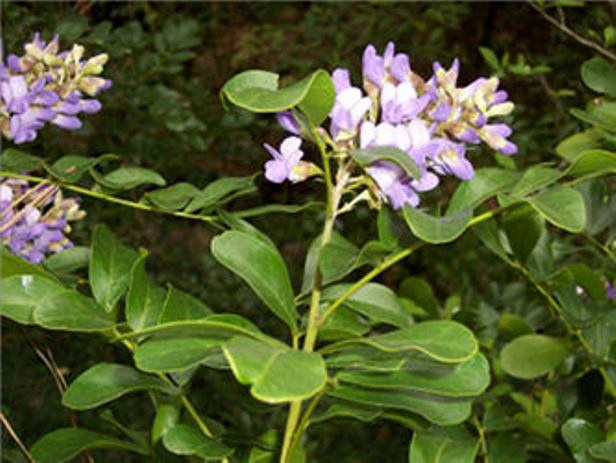
Propagating a Texas Mountain Laurel tree can be done through growing from seeds or purchasing established plants. Both methods have their advantages and challenges, but with the right knowledge and care, you can successfully propagate your own Texas Mountain Laurel tree.
Growing from Seeds
Growing a Texas Mountain Laurel tree from seed can be a rewarding experience. Here are the steps to follow.
Collect green pods or scarify hard, older pods to release the seeds.
Soak the seeds in warm water overnight to soften the seed coat and encourage germination.
Sow the seeds in a well-draining potting mix, planting them 1-inch deep in 4-inch pots.
Water the seeds regularly, allowing the soil to dry slightly between waterings.
As your seedlings grow, continue to provide them with adequate water and sunlight, allowing them to develop strong root systems and healthy foliage. With patience and care, your Texas Mountain Laurel seeds will grow into beautiful, fragrant trees that will enhance your landscape for years to come.
Purchasing Established Plants
Purchasing an established Texas Mountain Laurel plant from a trusted nursery is recommended due to its slow growth rate and difficulty in propagating from cuttings. By acquiring an established plant, you can enjoy the beauty and fragrance of your tree much sooner than if you were to grow it from seed.

When purchasing an established plant, look for a 15-gallon specimen for immediate visual appeal. Be sure to choose a reputable nursery or online plant retailer to ensure the health and quality of your Texas Mountain Laurel tree. With proper care, your purchased plant will thrive and become a stunning addition to your landscape.
Landscaping with Mountain Laurel Trees
Incorporate Texas Mountain Laurel trees into your landscape design through xeriscaping and native plant gardens. These drought-tolerant trees not only add beauty to your garden, but also support local ecosystems and provide habitat for pollinators.
Xeriscape Design
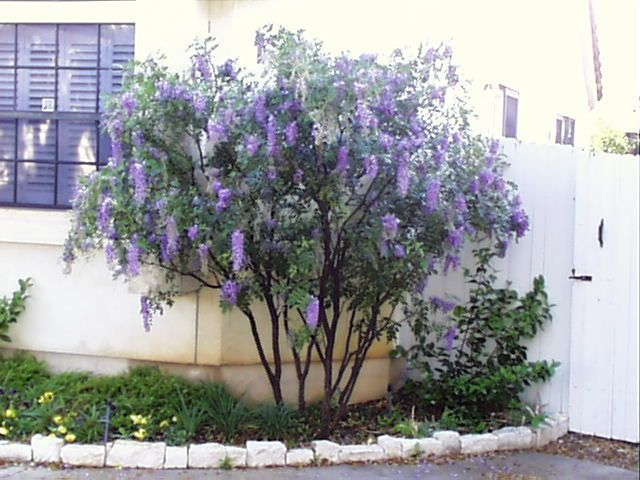
Texas Mountain Laurel trees are perfect for xeriscape designs, as they are a drought tolerant tree and thrive in dry, rocky soils. Xeriscaping is a landscaping technique that focuses on using plants with low water requirements, reducing the need for irrigation and conserving water resources.
By incorporating Texas Mountain Laurel trees into your landscape design, you can create a beautiful, low-maintenance landscape that is both visually appealing and environmentally friendly. Some benefits of using Texas Mountain Laurel trees in your landscape garden include:
Stunning spring blooms
Year-round evergreen foliage
Drought tolerance
Low water requirements
Wildlife attraction
With their stunning spring blooms and year-round evergreen foliage, Texas Mountain Laurel trees make a striking addition to any xeriscape garden. These Texas Mountain Laurels are not only beautiful but also well-suited for the Texas mountain landscape.
Native Plant Gardens
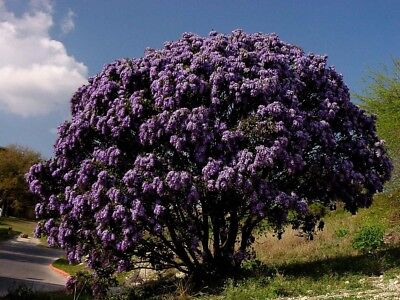
Include Texas Mountain Laurel trees in native plant gardens to support local ecosystems and provide habitat for pollinators and caterpillar host plants. Native plants, such as the desert native Texas Mountain Laurel, are an excellent choice for such gardens as they are adapted to local conditions and support a healthy ecosystem.
By incorporating Texas Mountain Laurel trees into your native plant garden, you’re not only adding beauty and fragrance to your landscape, but also promoting biodiversity and ecological balance. These trees provide valuable habitat for pollinators, such as bees and butterflies, and serve as host plants for caterpillars, a vital component of the food chain.
Summary
Texas Mountain Laurel trees are a stunning and low-maintenance addition to any landscape. With their fragrant flowers, evergreen foliage, and drought tolerance, they are perfect for xeriscape designs and native plant gardens.
By planting, caring for, and propagating these beautiful trees, you can create a landscape that not only looks amazing, but also supports local ecosystems and provides habitat for pollinators. Embrace the beauty of Texas Mountain Laurel trees and transform your garden into a thriving, fragrant oasis.
Frequently Asked Questions
How big does Texas Mountain Laurel get?
Texas Mountain Laurel can reach up to 30 feet tall, though it typically stays between 10-15 feet. This evergreen shrub is capable of being pruned into a multi-trunked tree form.
It produces bright purple clusters of fragrant flowers in the spring.
How fast does Texas mountain laurel grow?
Texas mountain laurel grows slowly at a rate of two feet per year – that’s the answer to the question of how fast it grows.
This slow-growing shrub should reach its desired size with regular pruning and patience.
Can you touch Texas Mountain Laurel?
It is generally safe to touch Texas Mountain Laurel, but people with sensitive skin may want to exercise caution and wear gloves when handling this shrub.
As an extra precaution, avoid ingesting any part of the plant since it can be toxic.
How big do mountain laurel trees get?
Mountain laurel trees can reach heights of 6 to 15 feet at maturity.
How often should I water my newly planted Texas Mountain Laurel tree?
It is recommended that you water your newly planted Texas Mountain Laurel tree every 3-4 days for the first few weeks, and then approximately every 4-7 days for the subsequent year.


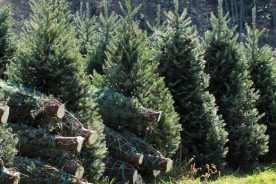


No Comments